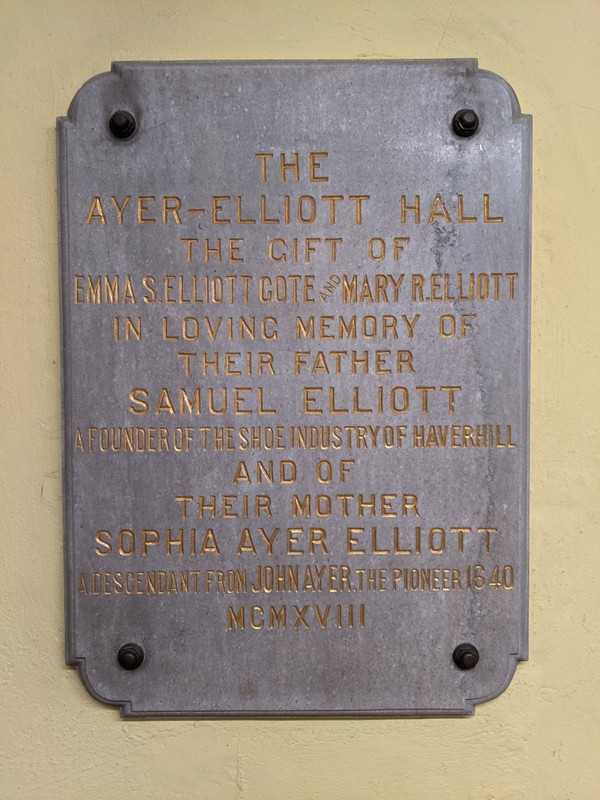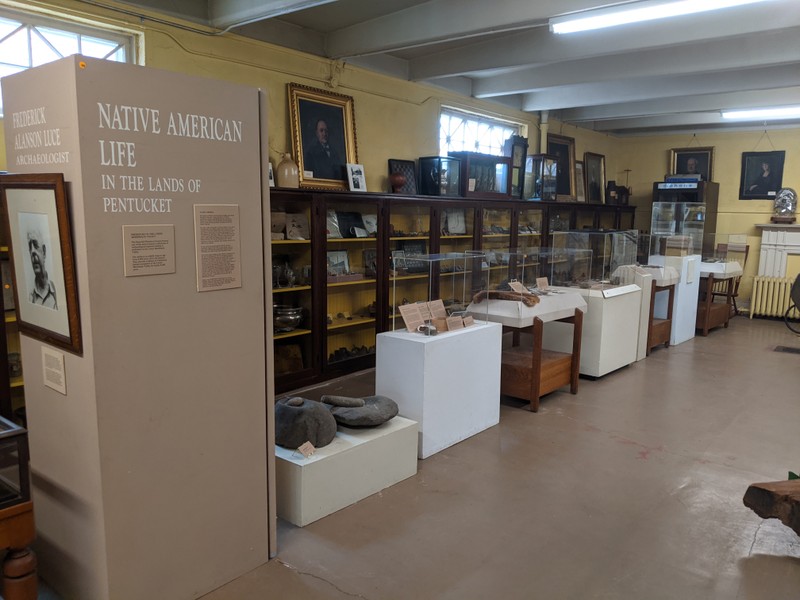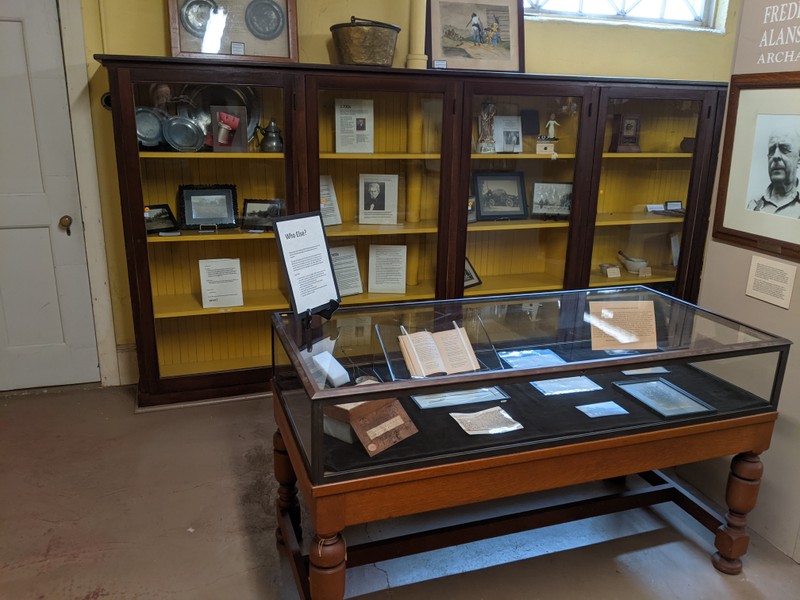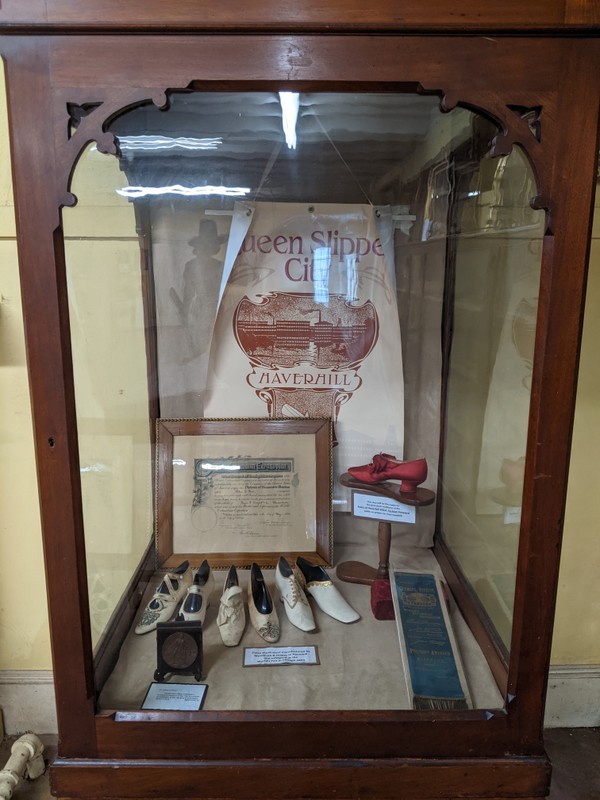Ayer-Elliot Hall
Introduction
Text-to-speech Audio
Images
Ayer-Elliot Dedication Plaque

Ayer-Elliot Display Cases

Native American Life Exhibit

Hannah Duston Exhibit

Queen Slipper City Exhibit

Backstory and Context
Text-to-speech Audio
Ayer-Elliot Hall displays a broad range of artifacts from Haverhill's history, including, but not limited to: firearms, broadsides, tableware, fire safety equipment, dolls, toys, furniture, and other everyday items, primarily from the 18th and 19th centuries. Sitting atop the main display cases are numerous portraits of various prominent former Haverhillites.
There are also several subjects that recieve a more signficant amount of focus in the exhibit space.
- Native American Life: In the Lands of Pentucket - features archaeological artifacts, educational dioramas, and contemporary portraits
- Hannah Duston - features Duston's confession of faith (circa 1725), 17th and 18th century artifacts associated with Duston, and 19th and 20th century artifacts related to her legacy's remembrance
- Queen Slipper City / History of Shoemaking - features examples of shoe components, finished shoes, and shoemaking equipment from both the cottage and factory industrial periods
This exhibit space is open to the public during normal museum hours.
Cite This Entry
Melissa Drake on behalf of Buttonwoods Museum. "Ayer-Elliot Hall." Clio: Your Guide to History. May 13, 2021. Accessed April 5, 2025. https://theclio.com/entry/21481/tour/7

